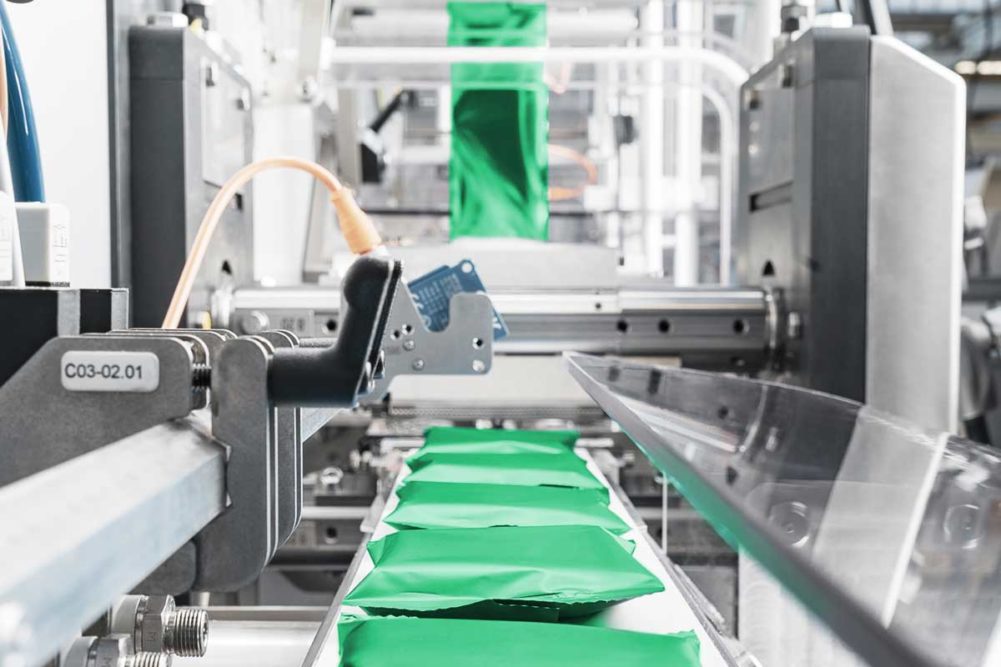Developing a versatile packaging department requires extensive preparation, especially for bread or snack operations with dozens of SKUs.
“The challenge with focusing on efficiency and automation is that you lose some of your flexibility unless you spend a lot of money,” said Dennis Gunnell, president, Formost Fuji. “You can run 250 to 300 individually wrapped products a minute automatically, and nobody will touch them,” he continued. “However, if you’re individually wrapping drastically different-sized products, for example, it requires careful planning for proper aligning, grouping, indexing and flowwrapping. The solutions are out there, but the baking industry has been notoriously slow in automating because of the flexibility demands to meet the constant changes in the market.”
The big question about investing in today’s market is predicting consumer behavior going forward.
“If we invest in equipment, what if none of this matters two years from now?” asked Steve McConnell, regional sales manager for Matrix Packaging Machinery, a ProMach product brand.
That’s why several bakers, especially those serving the foodservice market, are taking baby steps — and hedging their bets — when it comes to plunging into automation.
“If someone wants to go the flowwrapping or individually wrapping route, they initially go into it inexpensively,” explained Bill Kehrli vice president, sales and marketing, Cavanna Packaging. “They wait to see if the wave will continue, then reach out to us.”
Yes, gauging the direction of those waves can be a challenge, even for those who have been navigating consumer trends for years.
“If you remember six or eight months ago, the buzzwords were reduction in packaging, biodegradability, recyclability, compostability — and those are still huge issues,” Mr. Gunnell said. “But now, customers are saying, ‘We must have plastic around everything.’ You really have to evaluate the market and consider that a year from now, are we still going to be wrapping everything? Will everyone want every single Danish individually wrapped that goes into the foodservice market? Or will it go back to the way it was six months ago when the trend was reduction in packaging?”
Despite those key unknowns, Mr. Kehrli suggested that the answers may come sooner rather than later.
“My customers are running their operations wide open,” Mr. Kehrli said. “They are looking to make investments, but they’re afraid when life comes back to normal in 12 or 24 months when the equipment arrives, they aren’t going to need it. This is a short-term blip. Eventually, there will be a vaccine, and life will return to a normal, but at what level will that be? My customers are looking to see how to invest their money wisely. In the next two or three months, the gates will open up and people will say, ‘Now I know what we need to do.’ ”
For snack producers, Teri Johnson, divisional sales manager, TNA, recommended flexible packaging that can produce single-serve packs, grab bags or multipacks. She added that implementing packaging equipment with a flexible design will be increasingly critical moving forward.
“The pandemic has highlighted how important it has become to futureproof production lines with flexible processing and packaging technology,” Ms. Johnson explained. “Even as demand returns to ‘normal’ post-COVID-19 and market changes become difficult to predict, manufacturers must be poised to cope with possible sudden fluctuations in demand.”
Incorporating modular systems is one way to “futureproof” snack packaging.
“Crucially, modular systems enable multiple products to be processed on a single line, offering fast changeover times and minimal clean-down requirements — maximizing efficiencies,” Ms. Johnson said. “Similarly, systems where program parameters can be stored as recipes and easily adjusted at the touch of the button can help streamline operations.”
Moreover, automation can be useful to streamline operations by targeting inefficiencies to create a more efficient workforce, reduce waste and control energy costs.
Andreas Schildknecht, global product manager robotics and bakery, at Syntegon Technology, speculated that the future will bring greater demand on maintenance and sanitation.
“Hygienic design will become more important, allowing for more efficient cleaning methods and fewer contact surfaces,” he said. “Innovative operational methods to avoid contact between employees and products will further enhance hygiene standards. Good manufacturing practices mean changing the mindset, not only of bakery producers but also of equipment suppliers. Supplying the market with food-safe packaging starts by rethinking established processes and by working smarter instead of harder.”
That’s certainly the best approach to avoid bottlenecks and break existing ones wide open.
This article is an excerpt from the September 2020 issue of Baking & Snack. To read the entire feature, click here.





